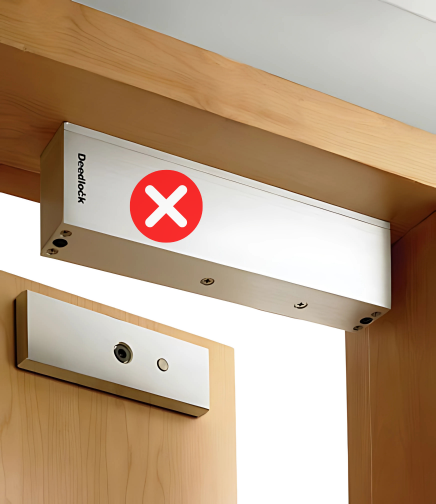Magnetic locks, also known as maglocks, are a popular choice for access control systems due to their reliable performance and robust security features. However, even the most well-designed magnetic locks can experience issues that prevent them from holding securely. If your maglock is not functioning as it should, it's essential to identify and address the underlying problem to maintain the integrity of your door security.
In this blog post, we'll explore the top reasons why magnetic locks may fail to hold properly and provide practical troubleshooting steps to help you get your access control system back on track.
Top Reasons Magnetic Locks Fail
-
Power Supply Problems: A faulty or inadequate power supply can prevent the maglock from receiving the necessary voltage to operate effectively. This can result in the lock not engaging fully or releasing prematurely.
-
Incorrect Voltage: Maglocks require a specific voltage range to function correctly. If the voltage is too low or too high, the lock may not hold as intended.
-
Wiring Issues: Damaged, loose, or improperly installed wiring can disrupt the flow of power to the maglock, causing it to malfunction.
-
Physical Damage or Wear: Over time, the physical components of the maglock, such as the electromagnet or armature plate, can become worn or damaged, reducing the lock's holding strength.
-
Environmental Factors: Exposure to moisture, extreme temperatures, or other environmental conditions can degrade the maglock's performance and lead to premature failure.
Diagnostic Steps
To identify the root cause of your maglock's issues, follow these diagnostic steps:
-
Check Power Connections: Ensure that the power supply is properly connected to the maglock and that all wiring is secure and undamaged.
-
Inspect Electrical Components: Visually inspect the maglock's electrical components, such as the solenoid and circuit board, for any signs of wear or damage.
-
Test Voltage Output: Use a multimeter to measure the voltage being supplied to the maglock. Compare the reading to the manufacturer's recommended voltage range.
-
Examine Physical Lock Mechanism: Inspect the maglock's physical components, including the electromagnet and armature plate, for any signs of wear, corrosion, or misalignment.
Troubleshooting Solutions
Once you've identified the underlying issue, you can take the following steps to resolve the problem:
-
Verify Correct Voltage: If the voltage is not within the recommended range, adjust the power supply or replace it with a unit that provides the proper voltage.
-
Replace Worn Components: If the maglock's physical components are damaged or worn, replace them with new, compatible parts.
-
Clean Contact Surfaces: Ensure that the contact surfaces between the electromagnet and armature plate are clean and free of any debris or buildup.
-
Adjust Mounting Alignment: If the maglock is not properly aligned, adjust the mounting to ensure a secure and consistent connection between the electromagnet and armature plate.
When to Seek Professional Help
In some cases, the issues with your magnetic lock may be more complex, requiring the expertise of a professional access control technician. If you encounter persistent lock failures, complex electrical problems, or the need for a complete system replacement, it's best to consult with a qualified specialist.
Preventative Maintenance Tips
To maintain the optimal performance of your magnetic locks, consider the following preventative maintenance tips:
-
Regular Inspection: Regularly inspect your maglocks for any signs of wear, damage, or misalignment.
-
Clean Contact Surfaces: Periodically clean the contact surfaces between the electromagnet and armature plate to remove any buildup of dirt or debris.
-
Check Power Supply: Ensure that the power supply is functioning correctly and providing the appropriate voltage to the maglock.
-
Professional Annual Servicing: Schedule an annual inspection and servicing of your access control system by a qualified technician to identify and address any potential issues.
By following these troubleshooting steps and implementing a proactive maintenance plan, you can help ensure that your magnetic locks continue to provide reliable and secure access control for your business.

